

Josh Nevett
2025 Bentley Bentayga review
5 Days Ago

Senior Contributor
Lexus has entered what it calls “a new era”, with the reveal of its first electric vehicle (EV) built on a dedicated EV platform – a Toyota Group architecture called e-TNGA.
Full name Lexus RZ450e, it’s designed as a competitor to premium EV crossovers such as the Tesla Model Y, Audi E-Tron, BMW iX3, Mercedes-Benz EQC, and Genesis GV70 Electrified.
It shares a lot of its underpinnings with the Toyota bZ4x and Subaru Solterra twins, jointly developed.
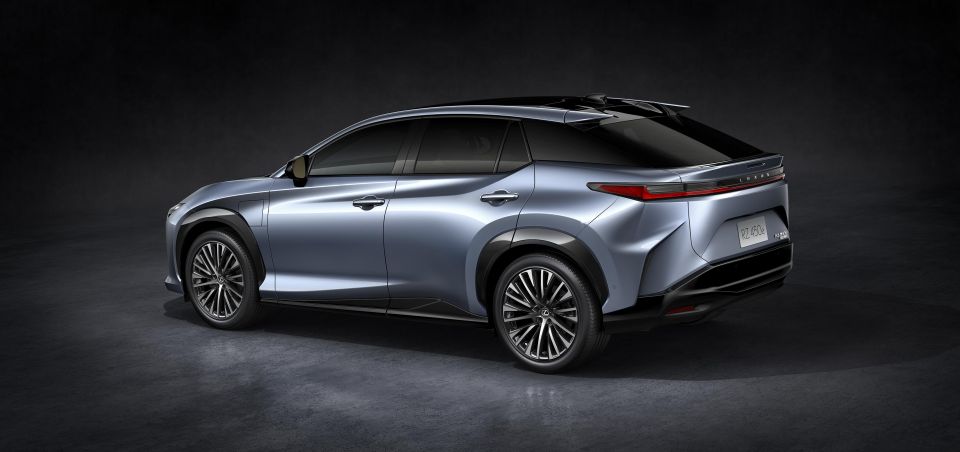
It’s the first of Lexus’s new-generation vehicles, as the company works towards a target of having electric versions of all its cars by 2030, and becoming EV-only by 2035.
The battery capacity is listed as a Toyota/Subaru-matching 71.4kWh, and the company said its targeted driving range was a fairly modest 400km per charge, or up to 450km on a WLTC urban cycle.
Design-wise it has the Lexus signature creased sheetmetal, and its rear three-quarter in particular is very much like the petrol/hybrid Lexus RX. Following in the wheel tracks of the new petrol/hybrid Lexus NX, it uses a full-width rear light bar and a lettered badge.
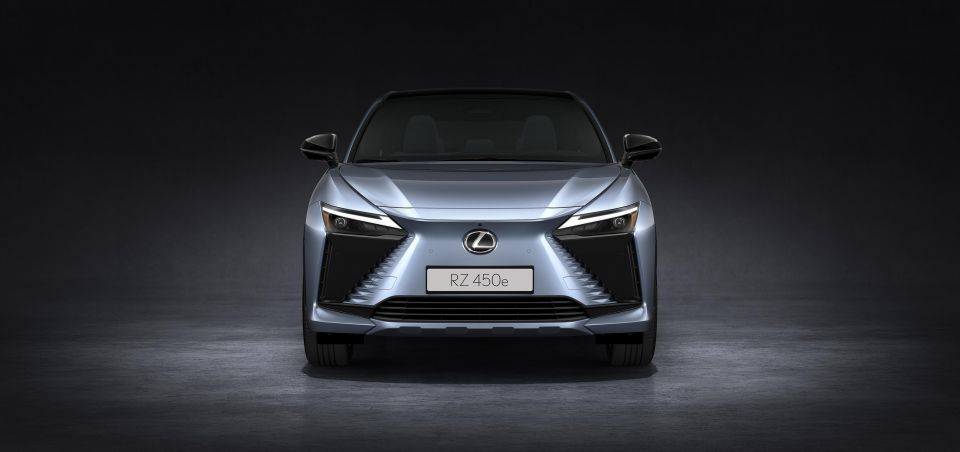
The ducktail shape on the end of the boot reduces drag and generates downforce, Lexus claims. Without the need for a radiator, the RZ axes the trademark ‘spindle’ grille design but hints at it by using familiar-shape bumper and lights.
While the exterior might be called an evolution of what the brand’s already been doing, inside the RZ is like no other Lexus before it.
As Tesla has tried on the Model S, it has a steering-by-wire yoke rather than a steering wheel – the bZ4x premiered with one too – although we’d bet a more conventional offering will be made available.

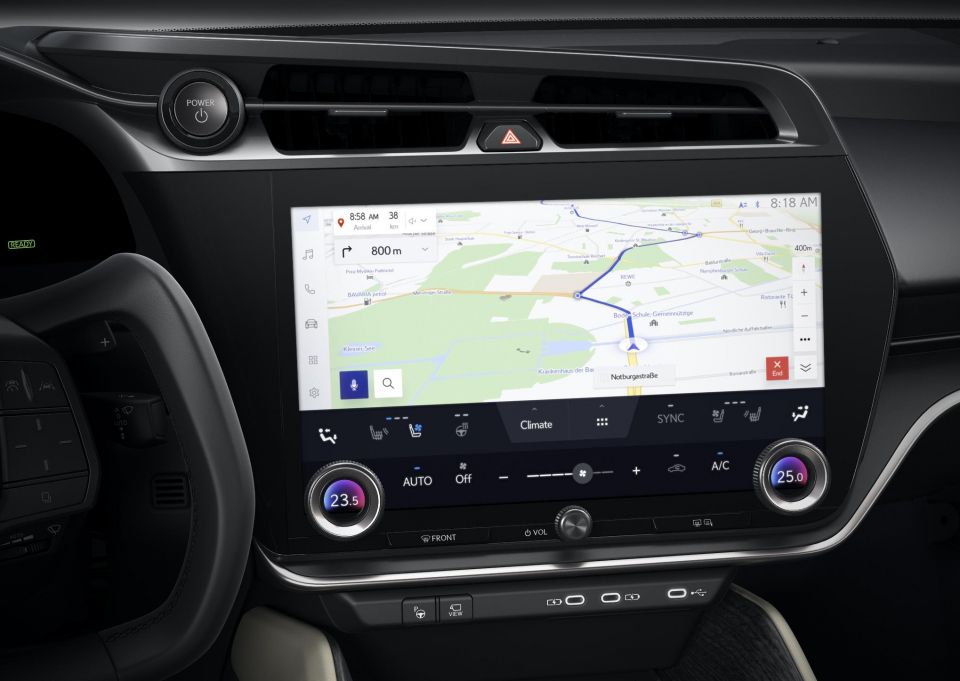
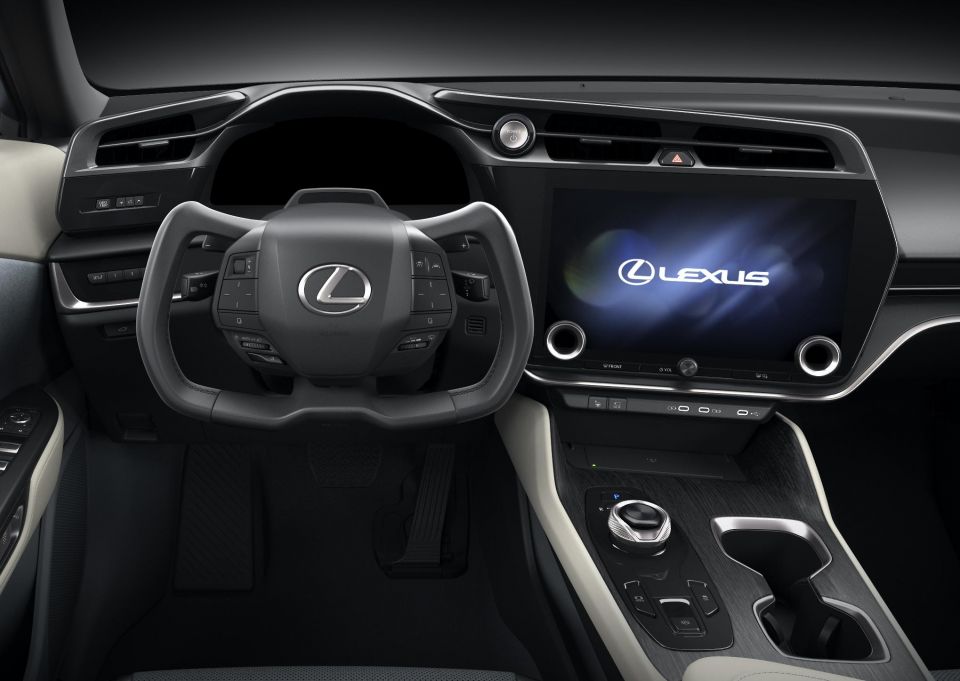
It has a large driver-facing touchscreen and a much simpler, more clinical layout than we’re used to seeing from Lexus. Shift-by-wire means a Lexus-first dial shift knob, while the NX’s ‘e-latch’ door mechanism also features.
The seat materials use a claimed 30 per cent “bio-based sustainable materials”, and an available panoramic glass roof has heat shielding, thermal insulation and 99 per cent UV protection, and another Lexus-first: a dimming function like the BMW iX.
Expect the RZ to be quiet on the road, with Lexus saying the underfloor battery doubles as a sound barrier. A sealed bonnet perimeter cuts turbulent airflow, and acoustic glass cuts other unwanted sounds.
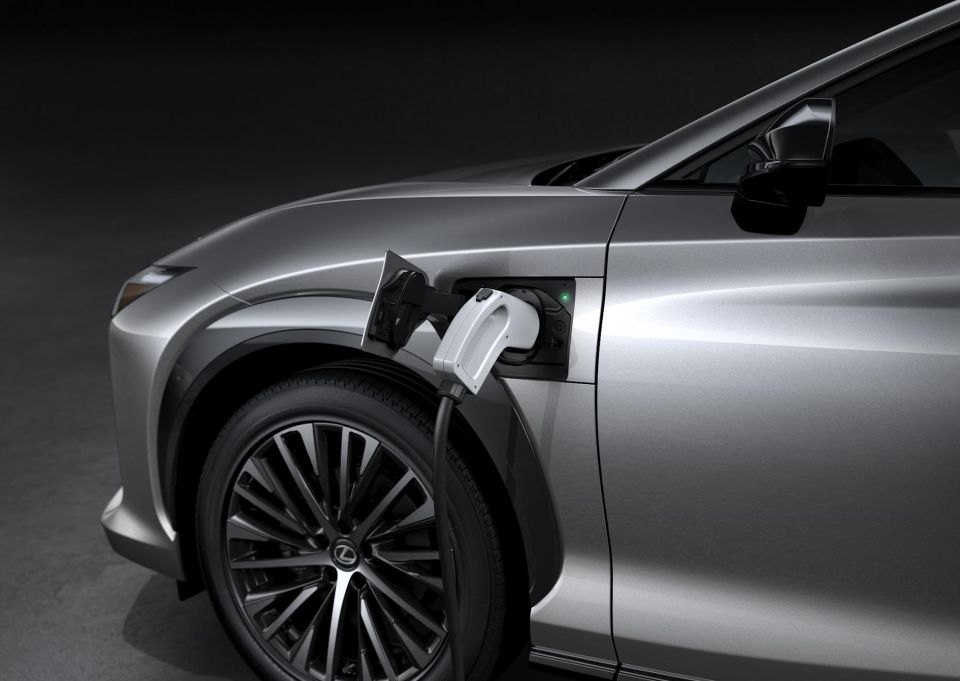
The e-TNGA platform underneath the body is designed for EVs from the get-go, in a manner unlike Lexus’s first EV, the UX300e.
The RZ rides on a front MacPherson strut suspension, and its rear uses a trailing arm double-wishbone configuration. Lexus is fitting frequency-reactive dampers that alter damping force on the extension stroke based on how rough the roads are, while “performance dampers” offering a stiffer ride will be available.
Interestingly, Lexus says its battery-control technology enables a capacity retention rate of at least 90 per cent after 10 years.
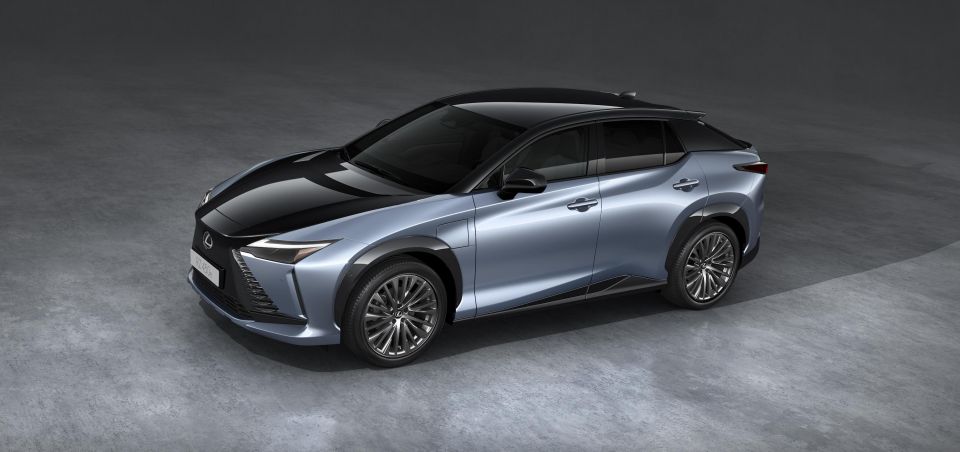
It looks like a pretty tricky bit of kit in terms of its running gear, with drive motors on each axle with variable system torque distribution from outputs of 150kW (front) and 80kW (rear).
Lexus says this AWD system “uses acceleration, cornering-speed and steering-angle information to automatically adjust front to rear torque delivery and braking force to all four wheels”.
Off the mark and when driving straight, power allocation front to rear oscillates from 40 per cent to 60 per cent, and vice-versa.

But when the steering wheel or yoke is turned, drive force is biased to the front wheels between 50 and 75 per cent for more feel.
When exiting the corner the system flips the script by sending up to 80 per cent of system outputs to the rear axle for RWD oversteer potential.
The steer-by-wire system is another Lexus first, with a benefit being its ability to block out vibrations from the tyres and brakes because any physical connection is removed.
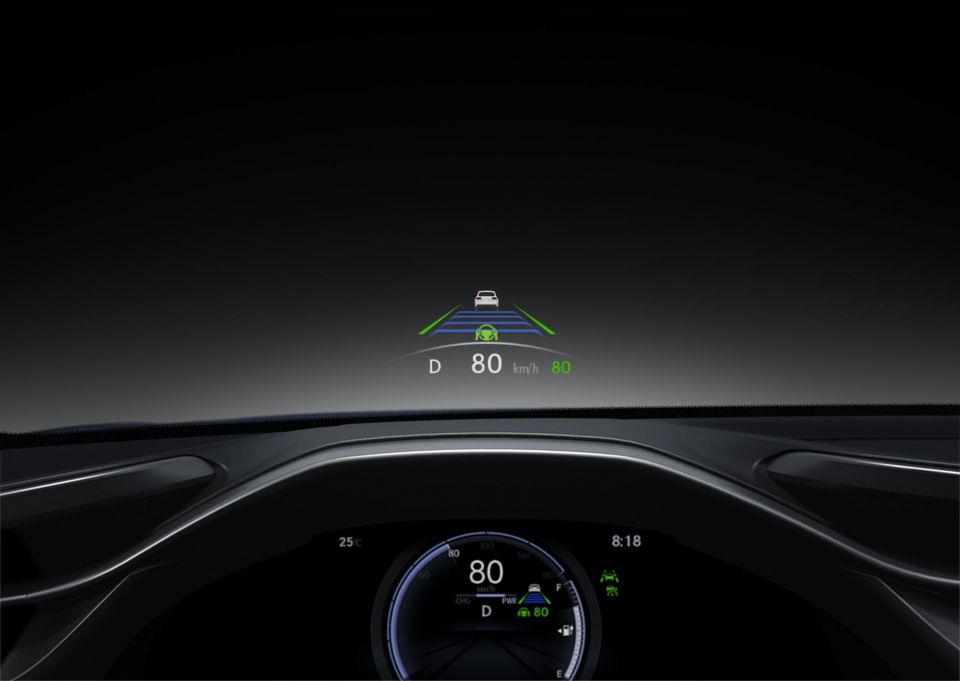
Let’s hope Lexus spent some time tuning the feel and feedback, unlike Infiniti’s system from the Q50 last decade.
In terms of driver-assist, Lexus uses the term “team-mate” to describe its traffic-jam support and highway lane-keeping system. If the car senses the driver is slumped over, it can slow down to a gradual stop, unlock the doors, and call an ambulance by itself.
Like the Kia Sorento, it can also be parked remotely – but through an app rather than the key fob.
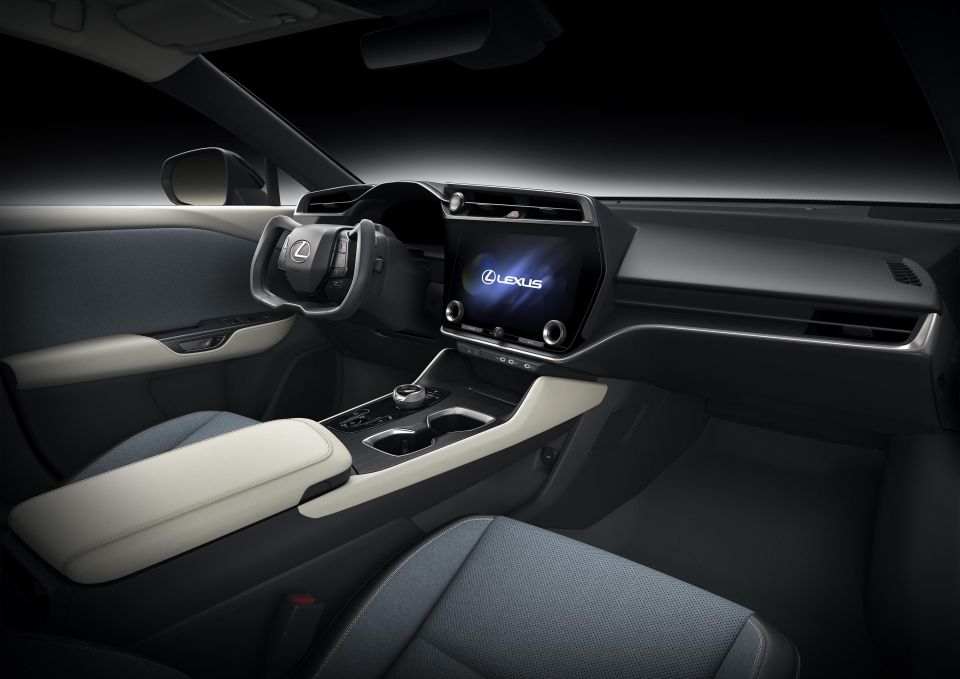

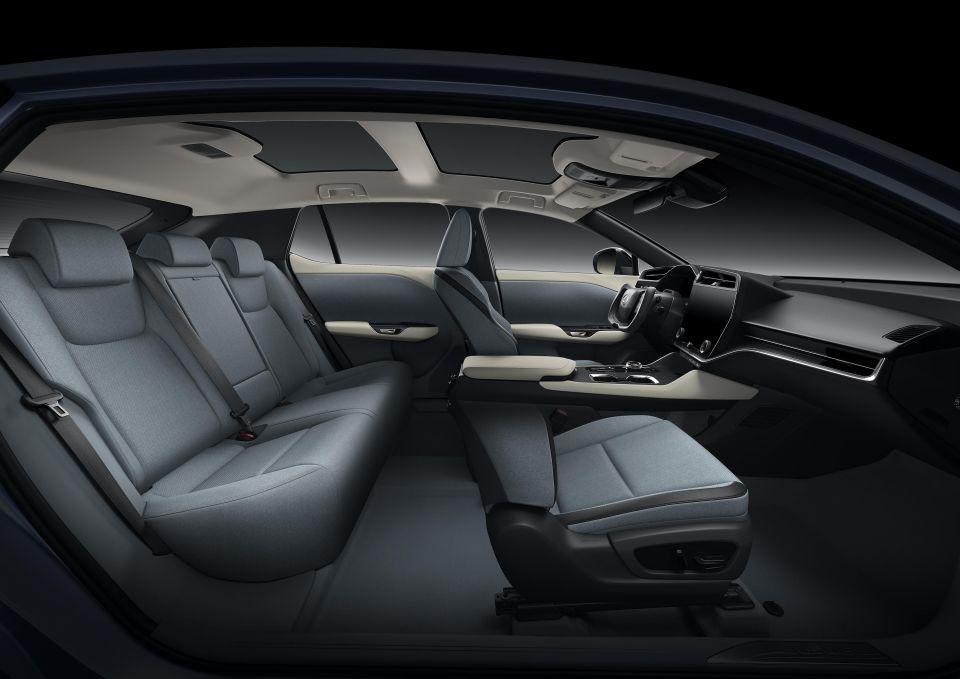
Dimensions
Lexus’s Australian division says it “would love to get it” but there’s no word on local timing. It’ll certainly come, but bigger markets in Europe, Asia and the US will in all probability take priority – as they so often do given Australia’s slow BEV take-up.
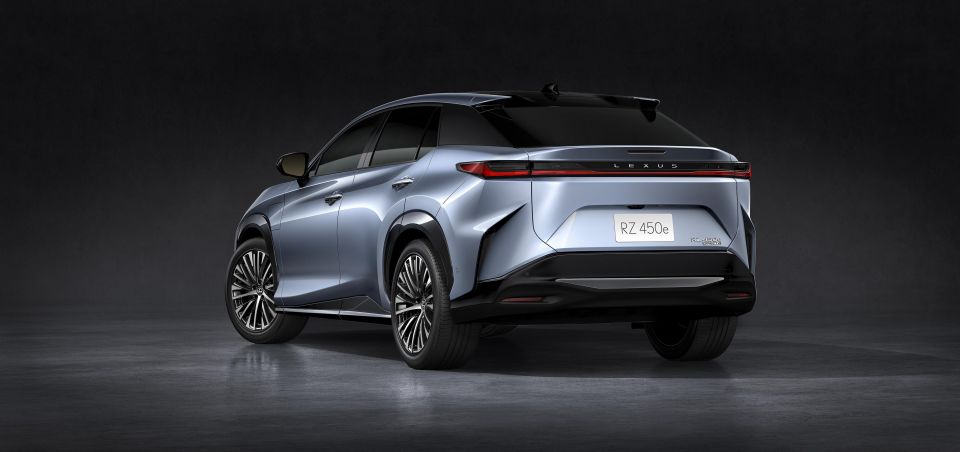
Lexus Australia wants 80 per cent of its sales by 2025 to come from cars running either hybrid, plug-in hybrid (PHEV), or battery electric (BEV) drivetrains – making petrol-only offerings a sliver of its volume.
This is well up on its record 39 per cent hybrid share achieved in 2021.
MORE: Toyota accelerates battery EV sales target by 75 per cent MORE: Toyota and Lexus reveal 16 diverse electric concepts MORE: Toyota to develop new hybrid, PHEV and EV platform just for Europe MORE: Which brands are going fully electric and by when?
Where expert car reviews meet expert car buying – CarExpert gives you trusted advice, personalised service and real savings on your next new car.


Josh Nevett
5 Days Ago


Andrew Maclean
4 Days Ago


Shane O'Donoghue
4 Days Ago


Anthony Crawford
3 Days Ago


Matt Campbell
2 Days Ago


James Wong
1 Day Ago